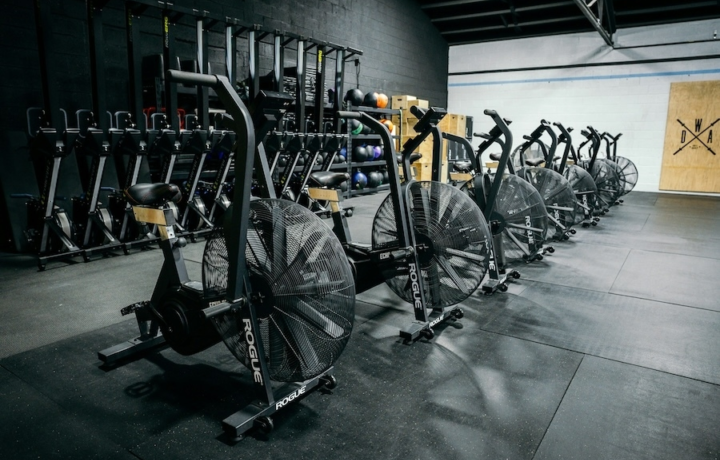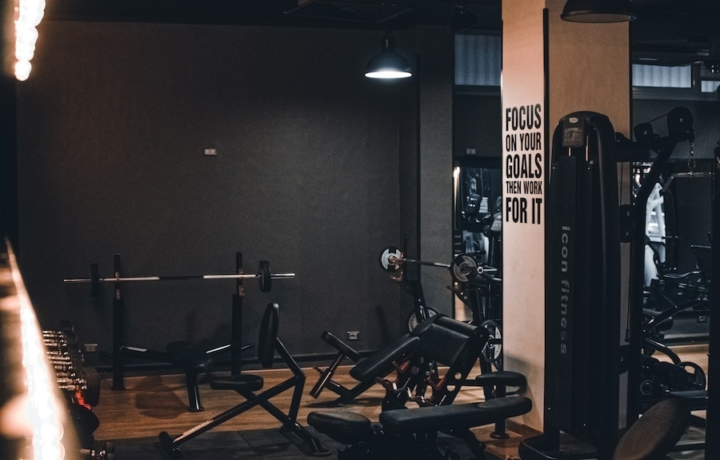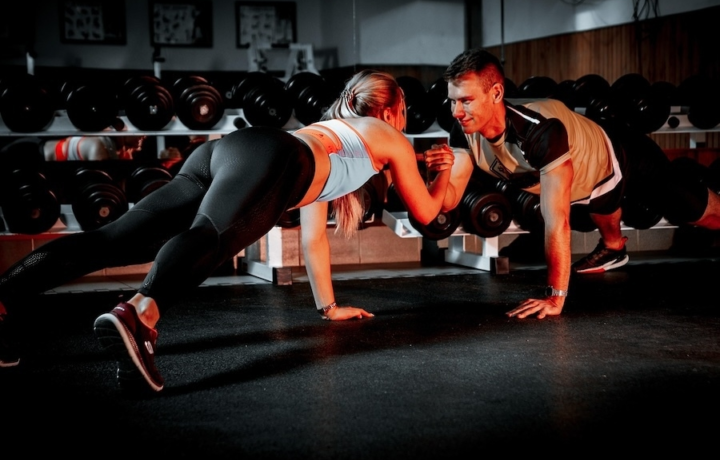Exercise
Farmers Walk

Farmers Walk
How to Perform
- Stand upright between two heavy dumbbells, kettlebells, or specially designed farmer's walk handles placed on the floor beside your feet.
- Hinge at the hips with a neutral spine, bend your knees slightly, and grasp the handles with a firm grip, keeping your shoulders pulled back.
- Brace your core, take a deep breath, and drive through your legs to stand up with the weights hanging at your sides, maintaining a tall, upright posture.
- Keep your shoulders back, chest up, and spine neutral with arms fully extended, while ensuring the weights don't touch your body.
- Begin walking forward with controlled, deliberate steps, maintaining a consistent pace while breathing normally.
- Keep your core engaged throughout the movement to stabilize your spine, and maintain a strong grip as fatigue increases.
- Walk for the prescribed distance or time, focusing on steady breath and preventing the weights from swinging excessively.
- To finish, slow down gradually and carefully lower the weights to the ground by hinging at the hips and bending your knees, maintaining your neutral spine position.
Important information
- Choose a weight that allows you to maintain proper posture throughout the entire walk—if you're hunching forward, the weight is too heavy.
- Keep your shoulders pulled back and down throughout the exercise to prevent unnecessary strain on your upper trapezius.
- Take short, quick steps rather than long strides to maintain better balance and core stability.
- If grip strength is limiting your performance, consider using lifting straps, but regularly train without them to develop natural grip strength.

Farmers Walk
Exercise Details
Primary Muscles
Muscle Groups
Mechanic
Risk Areas
Built for progress
Take the guesswork out of training
Create personalized AI-powered workout plans that evolve with you. Train smarter, track every rep and keep moving forward, one workout at a time.






The Farmer's Walk stands as a cornerstone exercise for developing functional strength and real-world power. This intermediate movement might look simple, but don't be fooled – it delivers remarkable results by engaging multiple muscle groups simultaneously, particularly targeting the forearms, glutes, quads, and abs. What makes the Farmer's Walk so effective is its simplicity combined with its brutal efficiency.
By simply picking up heavy weights and walking, you're creating a full-body tension that few other exercises can match. Your forearms work overtime to maintain your grip, your glutes and quads drive each step forward, and your core stays constantly engaged to stabilize your torso against the challenging load. This versatile exercise seamlessly fits into various training methodologies.
HIIT enthusiasts can incorporate timed Farmer's Walk intervals to spike heart rate and build work capacity. Crossfitters value it for developing grip endurance and overall functional strength. Meanwhile, bodybuilders increasingly recognize its value for building forearm size, trap development, and enhancing overall physique density that isolation movements alone can't provide. The beauty of the Farmer's Walk lies in its dual-nature training benefits. On one hand, it builds tremendous strength through the entire posterior chain while challenging your grip like few other movements.
On the other hand, it develops serious muscular endurance, particularly in the shoulders, traps, and core: areas that need to sustain tension throughout the entire walk. Consider the Farmer's Walk not just as an accessory movement but as a training staple that bridges the gap between gym strength and real-world capability.
When programmed consistently, this exercise can transform not only how you look but how you function in everyday activities. The carryover to everyday tasks like carrying groceries or luggage becomes immediately apparent, making this one of the most practical strength builders in your exercise arsenal.
FAQ - Farmers Walk
The Farmer's Walk primarily works your forearms, traps, shoulders, core, glutes, and quads. It's truly a full-body exercise with particular emphasis on grip strength and the muscles that stabilize your spine while carrying heavy loads.
For beginners, start with weights you can carry for 30-45 seconds with proper form (typically 25-35% of your bodyweight per hand). Intermediate and advanced lifters should aim for 45-70% of bodyweight per hand, adjusting based on your distance goals and training experience.
The biggest mistakes include hunching your shoulders, leaning too far forward, taking excessively short steps, and holding your breath. Keep your chest up, shoulders back, take normal strides, and maintain a consistent breathing pattern throughout the carry.
Add Farmer's Walks at the end of your workout 1-2 times weekly, performing 3-4 sets of 30-60 second carries with 60-90 seconds rest between sets. They pair particularly well with lower body or full-body training days and can be alternated with other carrying variations.
You can effectively perform this exercise with dumbbells, kettlebells, or even loaded shopping bags for beginners. For advanced lifters without specialized equipment, heavy trap bars, loaded buckets, or weight plates with handles work well as substitutes.













